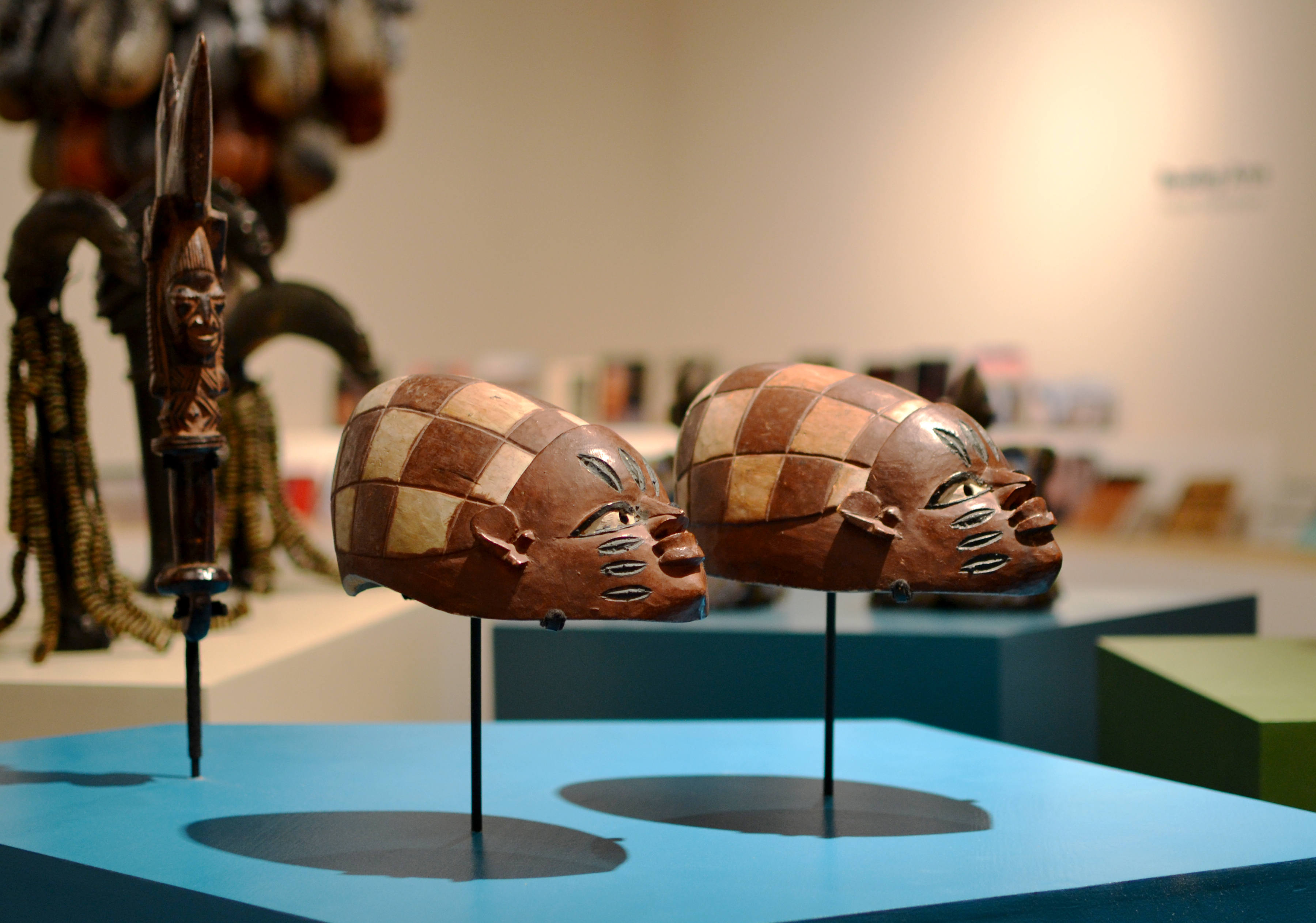Fowler Museum celebrates its 50th Anniversary

UCLA’s Fowler Museum celebrates its 50th anniversary with eight exhibitions. Most of the Fowler’s new exhibitions will be open until Jan. 26, with others running an extended showcase until March 2.
By Alicia Sontag
Oct. 14, 2013 12:00 a.m.
Over 5,000 globe beach balls are entwined around the front entrance and tower of the Fowler Museum. Like vines, they coil out of the heart of the Fowler building, the inner courtyard, both separating and uniting the building. Why? Because this fall, the Fowler Museum turns 50.
The Fowler Museum is celebrating its 50th anniversary with eight exhibitions, as well as the outdoor globe installation called “Walk among Worlds” by artist Máximo González. Some of the exhibitions will run until Jan. 26, while others will remain open until March 2. The celebratory exhibitions will include art such as textiles, cloaks, wooden sculptures and ceramics from Africa, the Pacific Islands and South America.
“Walk among Worlds” connects the eight other exhibitions by extending across Fowler Museum to each installation. Globe beach balls, made of petroleum products in China, are connected with wire, and are located mainly in the center of the building, the courtyard, González said.
González said the globes are illuminated by light, creating a shadow effect and an atmosphere around the other installations.
“The globes reflect the political division of different places around the world,” González said.
“Double Fortune, Double Trouble: Art for Twins among the Yoruba” is one of the celebratory exhibitions, displaying the idea of twins and the difference between apprenticeship and mastery. The exhibition contrasts simple, crude wood carvings made by apprentices with very intricate and fine detailed wooden memorial sculptures, created by masters.
Betsy Quick, an assistant curator, said there is a high incidence of twin birth in Nigeria, as well as a high level of twin passing, and the spirit of the twin who has passed needs to be attended to by the family. Thus, families would hire master carvers to create a memorial figure of their departed child, and then love and care for the sculpture.
“The idea of the carved twins is that these are memories of beloved children, and there is the importance of doubling two things together in Yoruba culture,” Quick said.
Artist Simone Leigh adds a contemporary twist with her piece “Topsy Turvy,”which features a colorful suspension of African dolls representing the departed twin.
Another exhibition is “The Peruvian Four-Selvaged Cloth: Ancient Threads/New Directions,” which displays ancient woven Peruvian textiles and contemporary textiles.
Elena Phipps, curator of the exhibition and independent scholar, said the exhibition examines the cultural context of pre-Colombian and contemporary work, and how the way things are made have meaning.
“Contemporary artists are affected by these pre-Colombian textiles because they know there was a meaning in the textile, even if they don’t know exactly what it was” Phipps said. “Each textile is a miniature world.”
Marla Berns, the director of the Fowler Museum, said the 50th anniversary seemed to be a great opportunity to celebrate where the Fowler started, and where it is today.
In 1963, former Chancellor Franklin D. Murphy founded the Fowler Museum with the intention of creating a research museum for non-western art and history.
Murphy added around 3,000 artifacts from around the world that were stored by professors and scattered around UCLA. Soon after its opening, Murphy organized a gift of over 30,000 pieces from the Sir Henry Wellcome Trust, a collection of African and Pacific art, which transformed the young museum drastically.
The gift from the trust turned the fledgling entity into a world-class collection, holding more permanent pieces than many established museums, Berns said.
“This gift put the young museum on the map almost over night,” Berns said. “It was the best start that any museum could possibly have.”
The formation of the museum coincided with the important liberation movements across the world, when people were no longer under subjugation of colonial governments, Berns said. The museum provided a forum for the study of these movements, the presentation of exhibitions and the publication of scholarly volumes.
Berns said the formation of Fowler and the addition of its first pieces foretold what would become great strengths in the museum’s holding, such as artifacts from the Zulu and the Congo.
Berns said the celebration of Fowler’s 50th anniversary shows how ambidextrous the museum can be.
“From its earliest days this museum was one of a kind, and had the ability to invent itself in the way it wanted to, which was to contextualize the art of other cultures, and to allow people to understand their meanings. Not to simply say this is art, but to say why it is art, and to help make the argument that this is art,” Berns said.


